Boeseman’s Rainbowfish are among the most cherished species in the realm of freshwater aquariums, celebrated for their vibrant colors and gentle nature. In this comprehensive guide, we embark on a journey to explore the captivating world of Boeseman’s Rainbowfish, from their distinct characteristics to their care requirements and breeding habits.
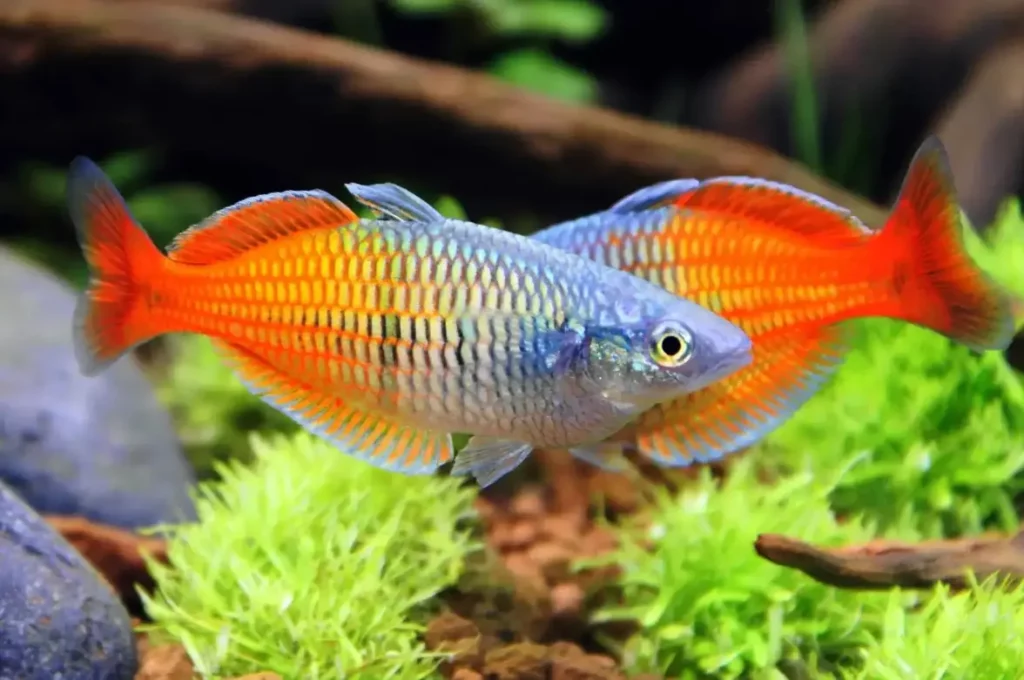
Introduction
Rainbowfish represent diverse and dynamic groups of freshwater fish, coveted by aquarium enthusiasts for their eye-catching colors and peaceful temperament. Among the wide range of rainbowfish species, Boeseman’s Rainbowfish (Melanotaenia Boseman) is highly recognized as one of the most popular choices for hobbyists.
With its amazing hues and relatively easy-care requirements, Boeseman’s Rainbowfish is a brilliant addition to community aquariums. In this complete guide, we will explore different aspects of caring for Boeseman’s Rainbowfish, types of rainbow fish, providing invaluable information for hobbyists.
Characteristics
This species is distinguished by its slim physique and gracefully flaunting fins contributing to its overall beauty. They feature a unique forked tail and a slightly pointed snout, giving them a graceful look.
Furthermore, the shimmering of their iridescent scales’ aquarium lighting enhances their aesthetic appeal. Boeseman’s Rainbowfish is an outstanding resource added to the community tank due to its peaceful nature.
| Scientific Name | Melanotaenia Boseman |
| Common Name | Boeseman’s Rainbowfish |
| Origin | West Papua, Indonesia |
| Life expectance | 5-7 years |
| Size | 4-5 inch |
| Color and marking | Males: Vibrant shades of blue, orange, and yellow; Females: Silver or olive-green with hints of blue or yellow |
| Tank size | Minimum tank size of 20-30 gallon |
| Temperament | Peaceful |
Origin
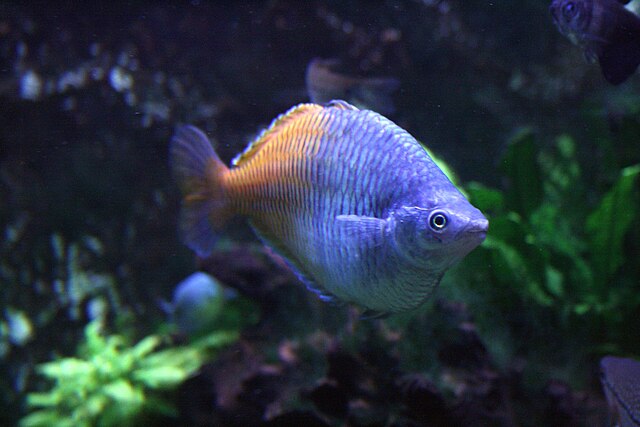
Boeseman’s Rainbowfish (Melanotaenia Boseman) is native to the clear and fast-flowing streams of the Ayamaru Lakes in West Papua, Indonesia. Rapidly gaining popularity after its first introduction into the aquarium in the 1970s due to its bright colors and tranquil mood.
Named in honor of Marinus Boeseman, a Dutch ichthyologist, these rainbowfishes belong to the family Melanotaeniidae and are closely related to other species within the genus Melanotaenia.
Size
When breeding in the right conditions, full grown Boeseman’s Rainbowfish can reach a size of maximum 4 to 5 inches (10 to 12 centimeters). However, generally Boseman’s rainbow fish size at maturity is smaller of about 2 to 3 inches (5 to 7 centimeters) in captivity.
Colors and Markings
What sets boeseman’s Rainbowfish fish apart from other species is its brilliant spectrum of colors. Males display an aesthetically pleasing combination of blue, orange, and yellow hues that extend along their bodies, fins, and tails.
The frequency of these colors frequently increases during courtship displays or when the fish are in optimal health. Females, on the other hand, sport more subdued colors, with a silver or olive-green body and faint hints of blue or yellow.
Tankmates
They flourish when surrounded by the company of equally sized and non-aggressive tankmates.
Appropriate companions include other rainbowfish of the same species and rainbow fish tank mates like tetras, danios, peaceful cichlids, and bottom-dwelling species like Corydoras catfish.
To prevent the rainbowfish from being threatened or harassed, it is advisable to keep them away from overly aggressive or territorial fish.
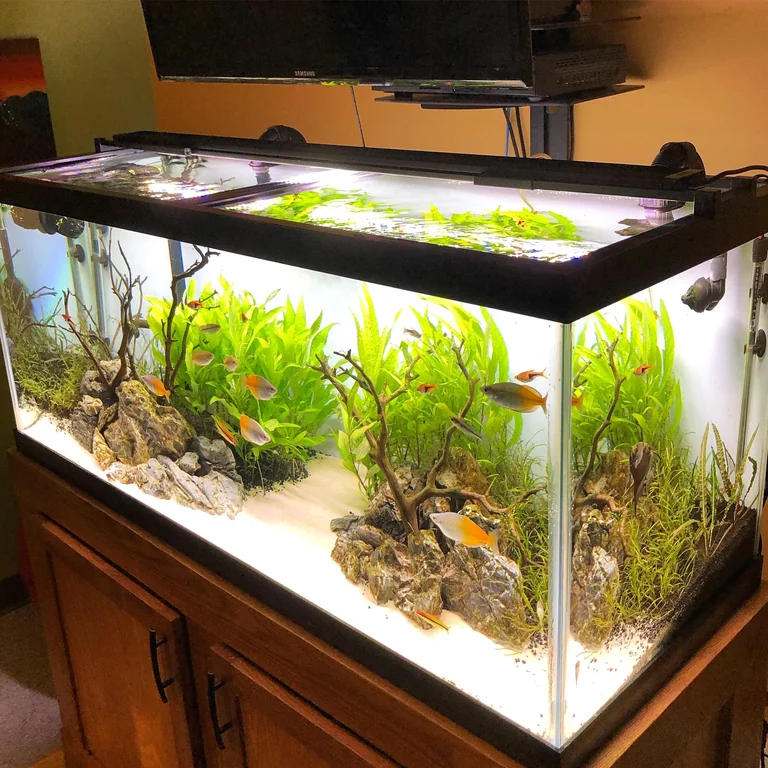
Life Expectancy
With proper care, Boeseman’s Rainbowfish can live for several years in captivity. On average, rainbow fish lifespan is up to 5 to 7 years, although some individuals have been known to exceed 8 years with optimal conditions and care.
Rainbow Fish Care
Tank Setup
The setting up of an optimal habitat is of utmost importance for the overall health and Boeseman’s Rainbowfish. A large aquarium with ample swimming room is necessary, mainly considering their active nature. A tank size of at least 30 gallons (113 liters) is recommended for a small school of these fish.
Water Parameters
Ensuring stable water conditions is important for the well-being of Boeseman’s Rainbowfish. They thrive in slightly alkaline water with a pH level ranging from 7.0 and 8.0 and a fluctuating rainbow fish temperature range of 75 to 82°F (24 to 28°C). Regular water changes of 25% every two weeks help maintain water quality and prevent the buildup of harmful pollutants.
Decor and Substrate
Boesemani Rainbow grow in an aquarium well-decorated with lots of hiding places and vegetation. Live plants, driftwood, and rocky caves serve as a replica of their natural habitat and provide chances for adventure and shelter.
A fine-grained substrate, such as sand or smooth gravel, is considered optimal for these fish due to its ability to sift through the substrate in search of food without causing injury to their fragile fins.
Diet and Feeding
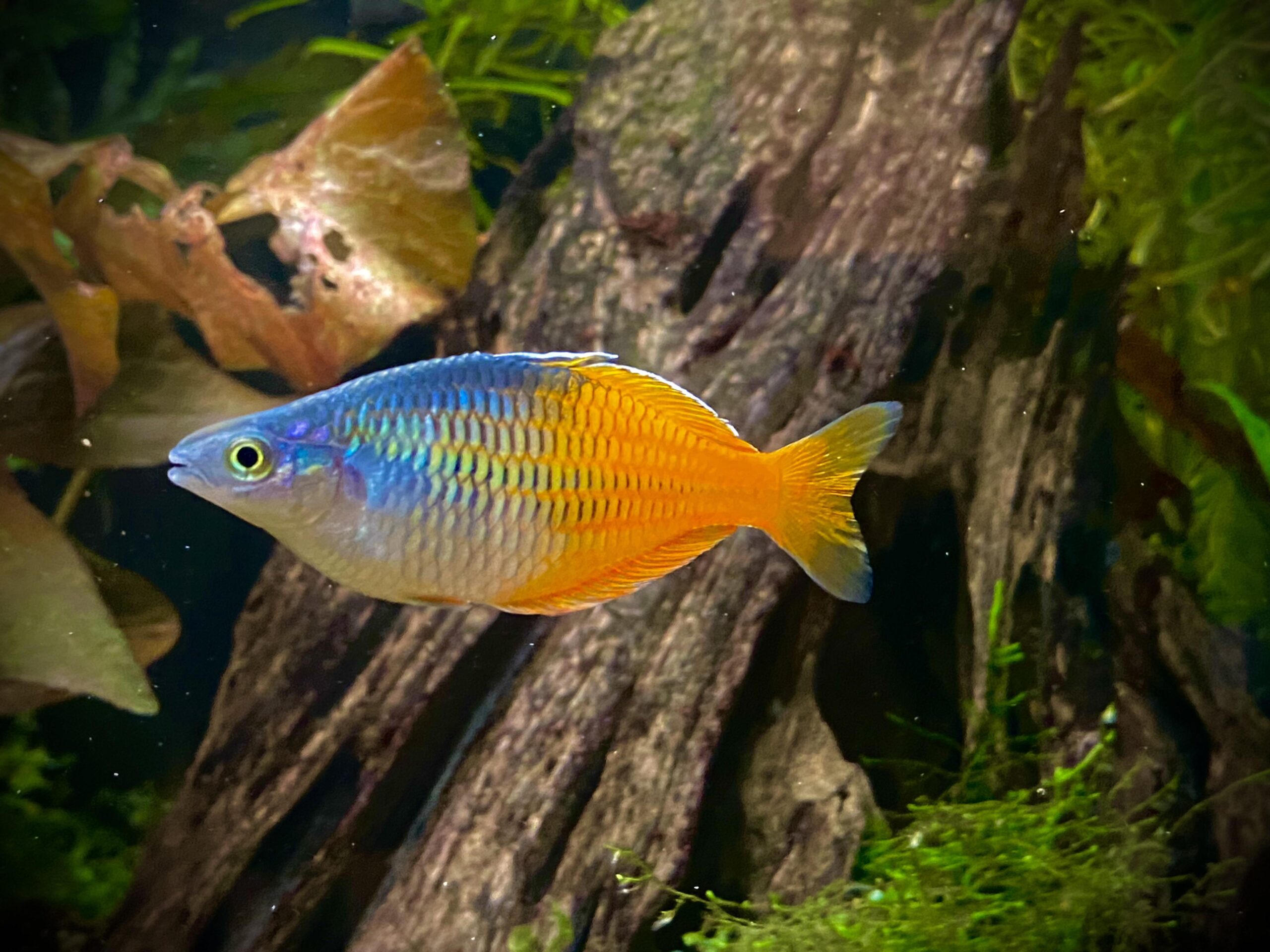
Boeseman’s Rainbowfish are omnivores with a hearty appetite. In their natural environment, they feed on a wide variety of small invertebrates, algae, and plant matter.
In the aquarium, they readily accept high-quality flake or pellet food supplemented with live or frozen foods such as bloodworms, brine shrimp, and daphnia. Providing a varied diet guarantees that they acquire vital nutrients and aids in the enhancement of their health.
Feeding Frequency
Small portions should be fed to Boeseman’s Rainbowfish several times a day rather than one large meal. This feeding routine mirrors their natural feeding behavior and prevents overfeeding, which can lead to water quality issues.
Gender Differences

Male and female Boeseman’s Rainbowfish are easy to differentiate, especially during their breeding season when sexual dimorphism becomes more pronounced.
In general, males display brighter colors with elongated fins and a deeper body compared to females. Females, on the other hand, are slightly smaller and have a more rounded belly, especially when carrying eggs.
Breeding
Breeding Boeseman’s Rainbowfish in a controlled environment is a rewarding task for committed hobbyists. Here’s what you need to know about how to breed Boesemani Rainbows:
Sexual Dimorphism:
To facilitate breeding, it is necessary to maintain a male-to-female ratio of one male to two or three females to alleviate the risk of excessive aggression.
Spawning Behavior
Boeseman’s Rainbowfish are egg scatterers, which means releasing their eggs in the proximity of fine-leaved plants or spawning mops.
Egg Incubation
After spawning, promptly remove the adults from the breeding tank to prevent egg predation. The eggs typically hatch within 7 to 10 days, depending on the water temperature.
Conclusion

Boeseman’s Rainbowfish symbolizes the beauty and elegance of freshwater aquarium fish. With their dazzling colors, peaceful demeanor, and engaging behavior, they make a captivating addition to any aquatic community.
By understanding their characteristics, care requirements, and breeding habits, hobbyists can provide these magnificent fish with the optimal conditions they need to thrive. Whether you’re a novice aquarist or a seasoned enthusiast, Boeseman’s Rainbowfish are sure to bring joy and wonder to your aquarium for years to come.


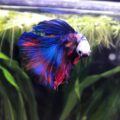
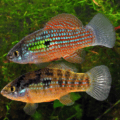

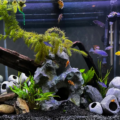



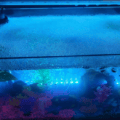
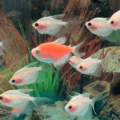
2 thoughts on “An Inclusive Guide for Hobbyists about Boeseman’s Rainbowfish”